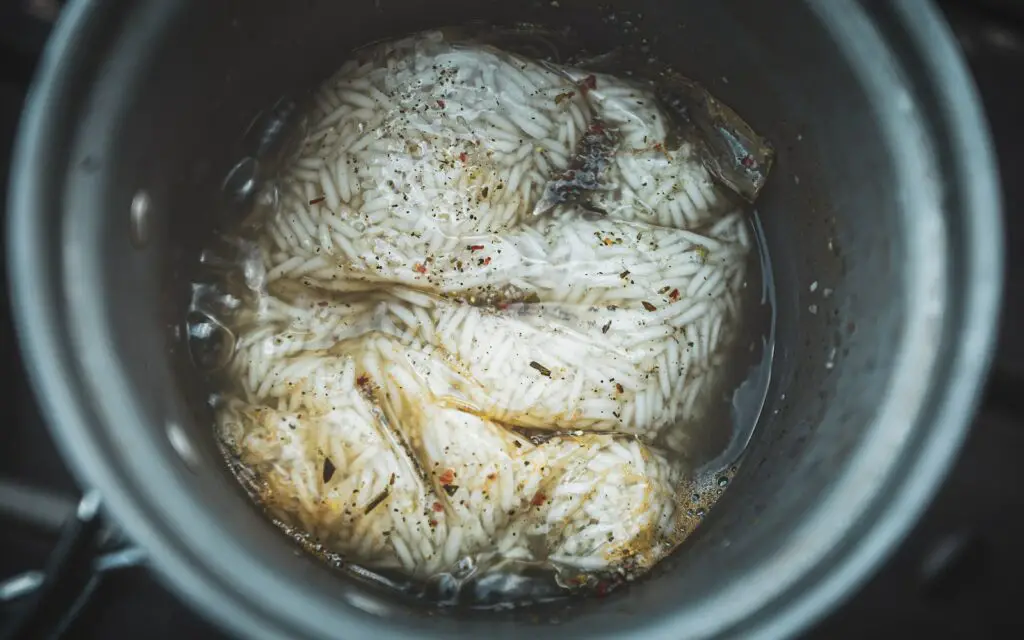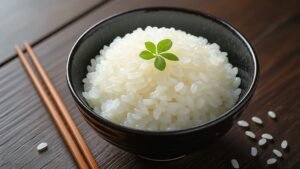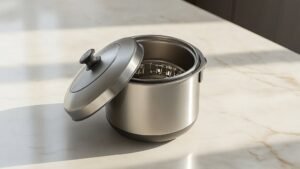Rice cookers, as we know, are a convenient kitchen appliance that many of us rely on for daily use.
Unfortunately, mold can develop in the moist and warm environment of a rice cooker if it’s not cleaned and maintained regularly. Not only is mold unsightly, but it can also be harmful to our health if ingested.
In this post, we’ll provide easy and effective tips on how to get rid of rice cooker mold. By following these steps, you’ll be able to maintain a clean and hygienic cooking environment for all your rice-cooking needs.
Table of Contents
ToggleUnderstanding the Causes of Rice Cooker Mold
Mold growth in rice cookers can be a recurring issue if the root causes are not addressed. Understanding the reasons behind it can help prevent future mold growth and ensure a healthy cooking environment.
What Causes Rice Cooker Mold?
Rice cooker mold is predominantly caused by a moist and warm environment within the appliance. When cooking rice, the lid traps steam and moisture, which can cause condensation on the lid. If not cleaned properly, this condensation can create the perfect breeding ground for mold spores to grow and multiply.

Mold can also develop due to residue left behind after cooking rice, which creates a food source for mold to thrive on. If rice is not rinsed prior to cooking, it can exacerbate this problem, leading to mold growth in the rice cooker.
Preventing Rice Cooker Mold
The best way to prevent mold growth in your rice cooker is through regular cleaning and maintenance. After each use, remove any leftover rice and rinse the pot with water. It is also recommended to wipe down the lid and exterior of the cooker to prevent any buildup of moisture.

Allow the rice cooker to fully dry before storing it away as moisture can quickly lead to mold growth. When cooking rice, be sure to rinse it thoroughly before adding it to the cooker to reduce the potential for mold growth.
By following preventative measures and understanding the causes of rice cooker mold, you can ensure a clean and healthy cooking environment and prevent any future mold growth.
Steps to Remove Rice Cooker Mold
If you spot mold in your rice cooker, don’t panic! Follow these steps to get rid of it:
- Fill the rice cooker halfway with water and add 1 cup of white vinegar.
- Turn on the rice cooker and let the solution boil for 10-15 minutes.
- Turn off the rice cooker and let it cool down.
- Drain the water and vinegar solution and rinse the rice cooker thoroughly with clean water.
- Use a soft sponge or cloth to wipe the inside of the rice cooker and remove any remaining mold.
- Dry the rice cooker completely with a clean towel.
It’s important to repeat this cleaning process regularly to prevent mold from developing in the first place. If you notice mold frequently returning, it may be time to replace your rice cooker.
Cleaning Your Rice Cooker to Prevent Mold
Regular cleaning is essential to prevent rice cooker mold. Here are some tips to help you maintain a clean and hygienic cooking environment:
Step 1: Unplug Your Rice Cooker
Prior to cleaning your rice cooker, it’s important to unplug it and let it cool down completely.
Step 2: Remove the Inner Pot
Remove the inner pot from the rice cooker and wash it thoroughly with dish soap and warm water. Do not use abrasive sponges or cleaners, as they can damage the pot’s surface. Rinse the pot and let it dry completely.
Step 3: Clean the Rice Cooker Body
Wipe the rice cooker body with a damp cloth to remove any dust or debris. For persistent stains, you can use a mild cleaner and a soft sponge. Avoid getting water inside the rice cooker body as it can damage the electrical components.
Step 4: Clean the Seal and Lid
The seal and lid of your rice cooker can harbor mold and bacteria if not cleaned regularly. Remove the seal and lid and wash them with warm, soapy water. Rinse them thoroughly and let them dry completely before reassembling your rice cooker.
Step 5: Keep Your Rice Cooker Dry
After cleaning your rice cooker, make sure to dry it thoroughly before using it again. Moisture can promote mold growth, so it’s important to keep your rice cooker dry at all times.
By following these simple cleaning practices, you can prevent rice cooker mold and ensure a clean and hygienic cooking environment.
Natural Cleaning Products for Rice Cooker Mold
If you prefer using natural cleaning products, there are several eco-friendly solutions to tackle rice cooker mold. Here are some effective natural agents:
- Vinegar: Vinegar is an excellent household cleaner and can kill mold spores effectively. Mix equal parts of water and vinegar, then use a clean cloth to wipe the inside of the rice cooker. Leave it for 15-20 minutes before rinsing it with water and drying it.
- Lemon Juice: Lemon juice has natural antibacterial properties that can help eliminate mold. Mix lemon juice and water in equal parts, then apply the solution to the affected areas of the rice cooker. Leave it for 5-10 minutes before washing and drying the cooker.
- Baking Soda: Baking soda is a natural cleaning agent that can help remove mold and prevent it from returning. Mix water and baking soda until it forms a paste, then apply it to the affected areas of the rice cooker. Leave it for a few minutes before scrubbing the cooker with a brush and rinsing it with water.
By using these ingredients, you can safely and effectively remove rice cooker mold without exposing yourself or the environment to harsh chemicals. Remember to rinse the cooker thoroughly after using any of these to avoid leaving any residue and any unwanted taste behind.
Tips for Proper Rice Cooker Maintenance
Proper maintenance is key to keeping your rice cooker mold-free and functioning at its best. Here are some tips to help you maintain your rice cooker:
- Unplug your rice cooker before cleaning it. This is a safety precaution that should always be followed.
- Wash the inner pot after every use. Use warm, soapy water to clean the pot thoroughly, making sure to remove any food particles or residue. Rinse the pot well and dry it completely before using it again.
- Wipe down the exterior of the rice cooker. Use a soft, damp cloth to wipe down the exterior of the rice cooker to remove any dirt or spills. Avoid using harsh chemicals or abrasive materials that could damage the surface.
- Check the rice cooker regularly for signs of wear and tear. This includes checking the power cord, the heating element, and any other parts of the rice cooker that could become damaged over time.
- Store your rice cooker properly. When not in use, store your rice cooker in a dry, cool place. Avoid storing it in damp or humid areas, which can encourage mold growth.
By following these basic maintenance tips, you can keep your rice cooker in good condition and avoid mold and other issues. Remember to always read and follow the manufacturer’s instructions for your specific rice cooker.
Conclusion
Getting rid of rice cooker mold is a simple process if you follow the tips outlined in this article. Remember to always take preventive measures by keeping your rice cooker clean and dry after each use. By doing so, you’ll avoid creating the ideal conditions for mold to thrive.
If you do notice mold in your rice cooker, don’t panic. Follow the steps we’ve provided to remove it effectively. Remember that regular cleaning and maintenance are key to preventing mold growth in the future.
FAQ
Q: How do I get rid of rice cooker mold?
A: To get rid of rice cooker mold, you can follow these easy and effective tips:
Q: What are the causes of rice cooker mold and how can I prevent it?
A: Rice cooker mold is caused by moist and warm environments. To prevent it, take the following measures:
Q: What are the steps to remove rice cooker mold?
A: Follow these practical steps to effectively remove rice cooker mold:
Q: How can I clean my rice cooker regularly to prevent mold growth?
A: To prevent mold growth in your rice cooker, implement these cleaning practices:
Q: Are there any natural remedies to tackle rice cooker mold?
A: Yes, here are some effective and eco-friendly natural remedies for rice cooker mold:
Q: What tips can you provide for proper rice cooker maintenance?
A: To maintain a mold-free rice cooker, follow these maintenance tips:
Last update on 2025-10-09 / Affiliate links / Images from Amazon Product Advertising API






